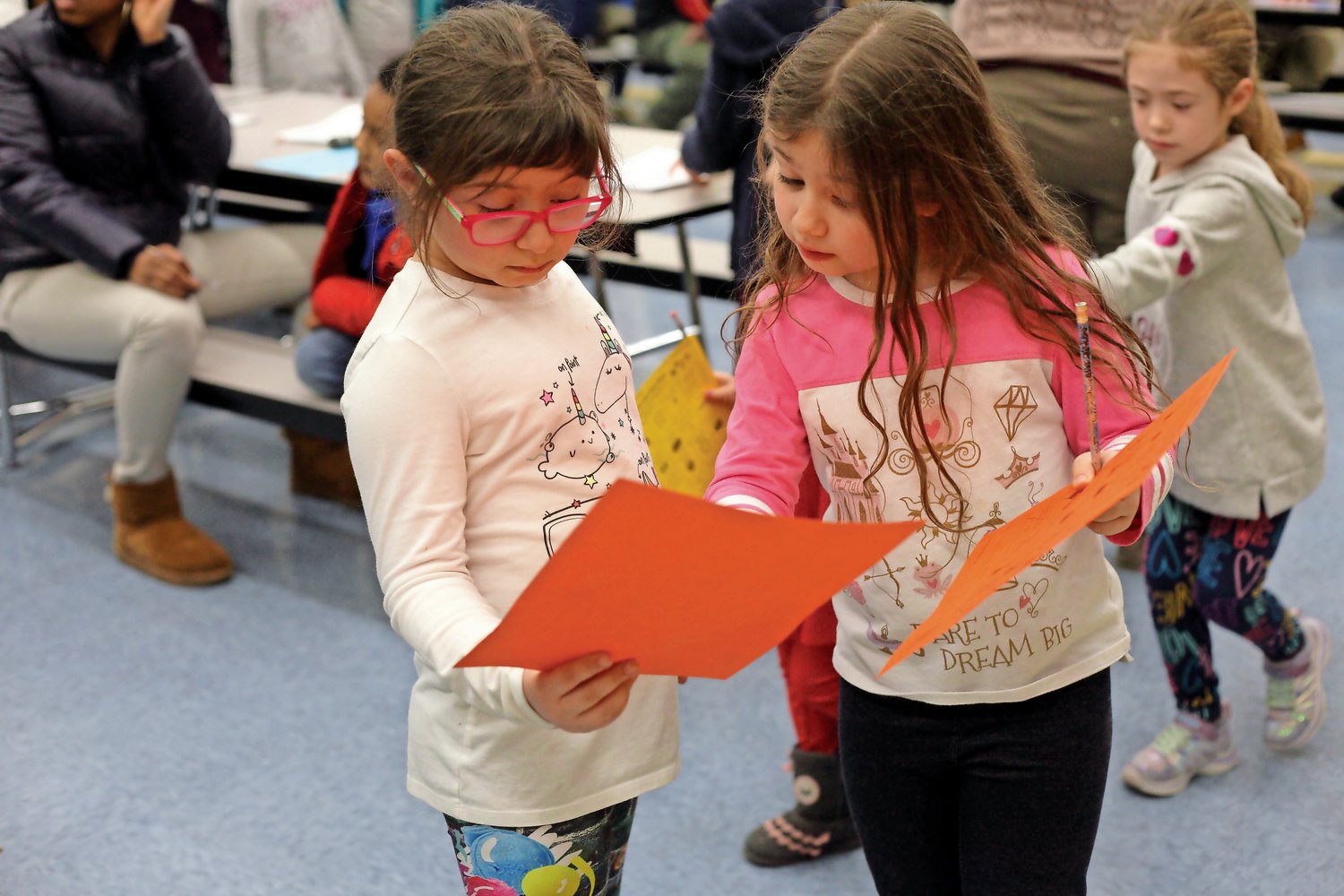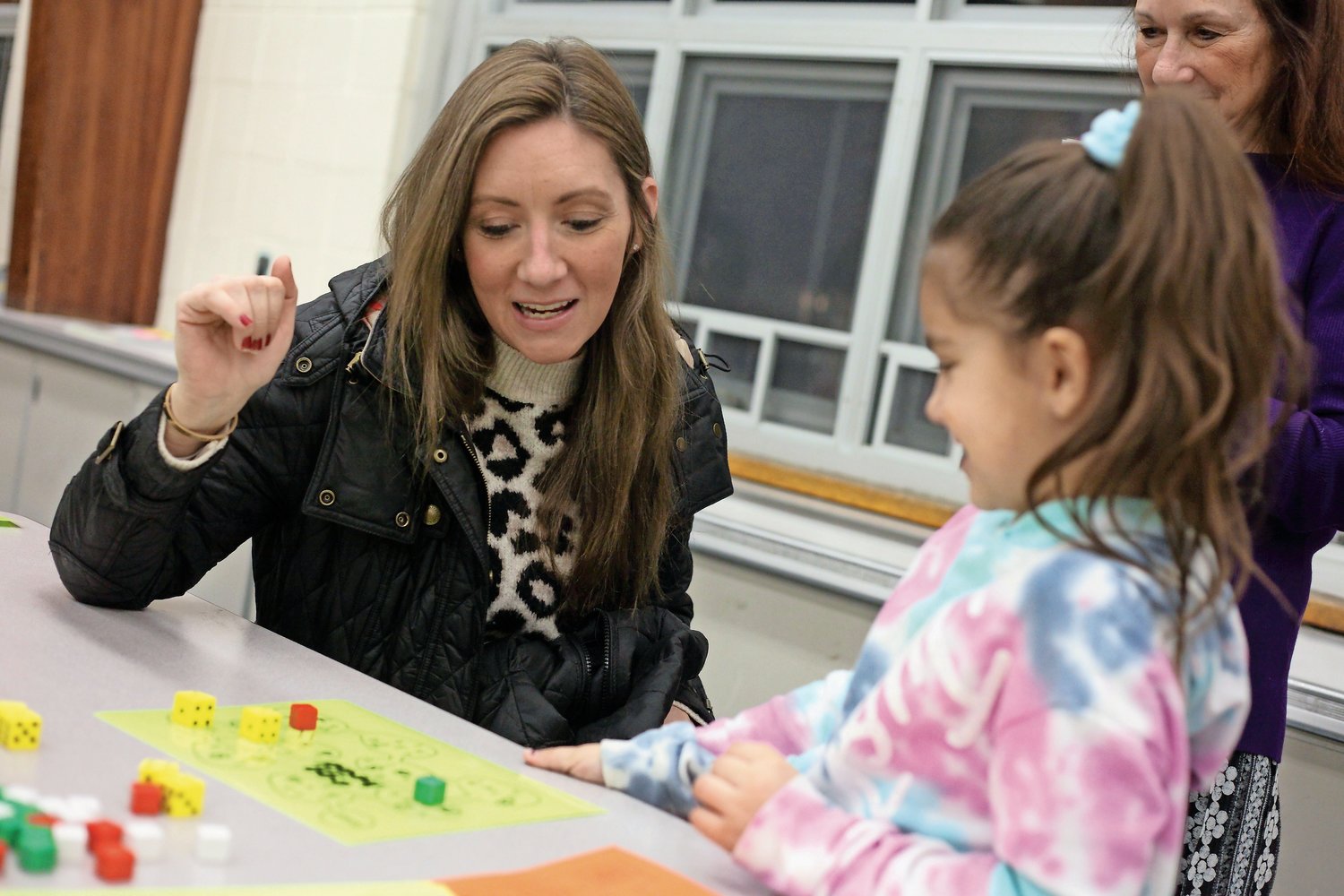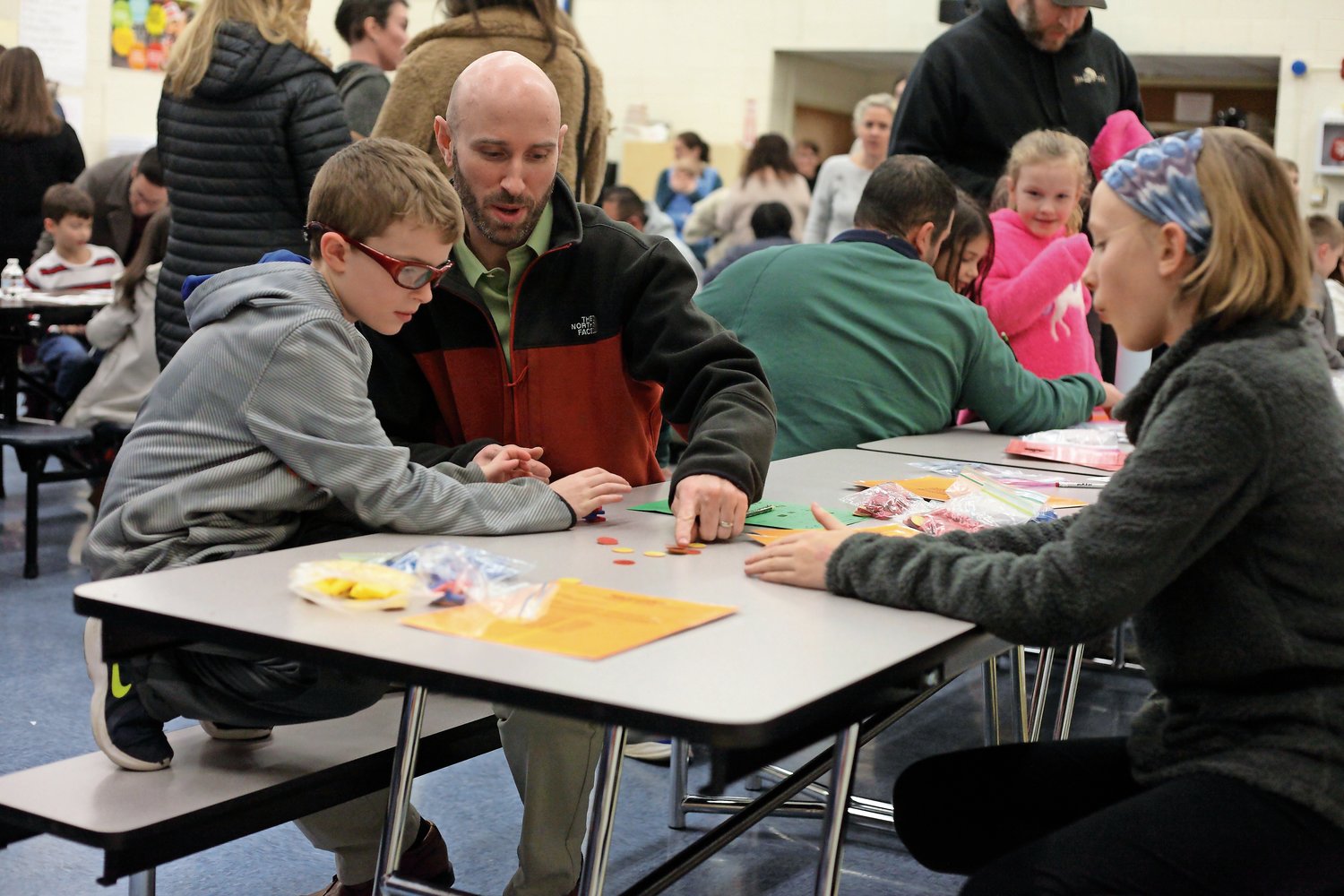Friday, April 19, 2024
 44.0°,
Mostly Cloudy
44.0°,
Mostly Cloudy
Math and reading, a way to bring families together
The excitement in the Bayville Primary School multi-purpose room was contagious. As the sun set on Jan. 15, teachers and middle school volunteers worked feverously, putting a plethora of math and reading games on 20 tables. The fourth annual Math and ELA (English Language Arts) Family Night was about to begin.
The math and reading activities ranged from Math Scavenger Hunt Bingo to Guess the Word. As teaching assistant Christina Vlavianos placed math puzzle pieces on a table she said with a chuckle, “Math is fun! Learning is fun! Family game night? Not a bad thing!”
At another table, seventh grade volunteer Zachary Cummo setting up his game, said he was looking forward to helping the younger children going to the school that he had attended five years before. “I miss it here,” he said.
At 6:30 p.m. sharp, close to 100 K-2 students and their families filled the room and gravitated toward the 10 reading games and 10 math games that sparked their interests. It quickly became apparent that the parents were having as much fun as the children.
Dorothy McManus, assistant principal at Bayville Primary and K-5 ELA coordinator, created the event with Kimberly Ferina, district math coordinator K-12. “I love watching a dad and son working on a game, engaged together,” said Ferina, as she watched the children and their parents interact. “It’s family time, but they’re doing something academic. I like seeing that connection.”
“The program is also for parents to see some skills that would be worthwhile to do with their children at home,” said McManus, adding that some games actually have different levels. “During the program, kindergarten children might approach a game that’s exactly on their level. Next, they might approach another game that’s on a second-grade level. If they have a hard time, just having the exposure is fine and parents are there to help them through.”
Chris Yarocki helped his six-year-old daughter Charlotte work with different sized triangles to create the shape of a bird. When Charlotte realized a shape she’d selected wasn’t going to fit, her father picked up a different one and asked her to try it?
“Yeah!” Charlotte said. “We gotta use more shapes!”
At a different table, Cristina Baron played a reading game with her seven-year-old daughter Sofia. Cristina clicked on a stopwatch and shouted, “Ready! Set! Go!” Then Sofia read a series of sight words at top speed until her time was up. She insisted on playing the game over and over again, trying to beat her time as she tackled new words.
Ron and Kelley Grassi played countless games with their three children, seven-year-old Domenic, five-year-old Ashley and four-year-old Julianna. “Family time brought us here,” Ron said.
Nearby Kelley was involved with the math scavenger hunt Bingo game. “It was the favorite in our family,” she said. “The kids liked coordinating pictures on a sheet of paper with objects they found around the room.”
At the end of the program, the winners of the math estimation games were announced. One jar had been filled with 44 dice. First graders Michaela Blough and Nikolas Riccairdi both estimated there were 46 and tied as the winners. Another jar filled with 2,025 cubes was estimated successfully by first-grader Charlotte Yarocki. All of the children who completed the math scavenger hunt Bingo game also went home with prizes. But no matter which games were played, it seemed that everyone went home with smiles.
HELP SUPPORT LOCAL JOURNALISM
The worldwide pandemic has threatened many of the businesses you rely on every day, but don’t let it take away your source for local news. Now more than ever, we need your help to ensure nothing but the best in hyperlocal community journalism comes straight to you. Consider supporting the Herald with a small donation. It can be a one-time, or a monthly contribution, to help ensure we’re here through this crisis. To donate or for more information, click here.
Sponsored content
Other items that may interest you









